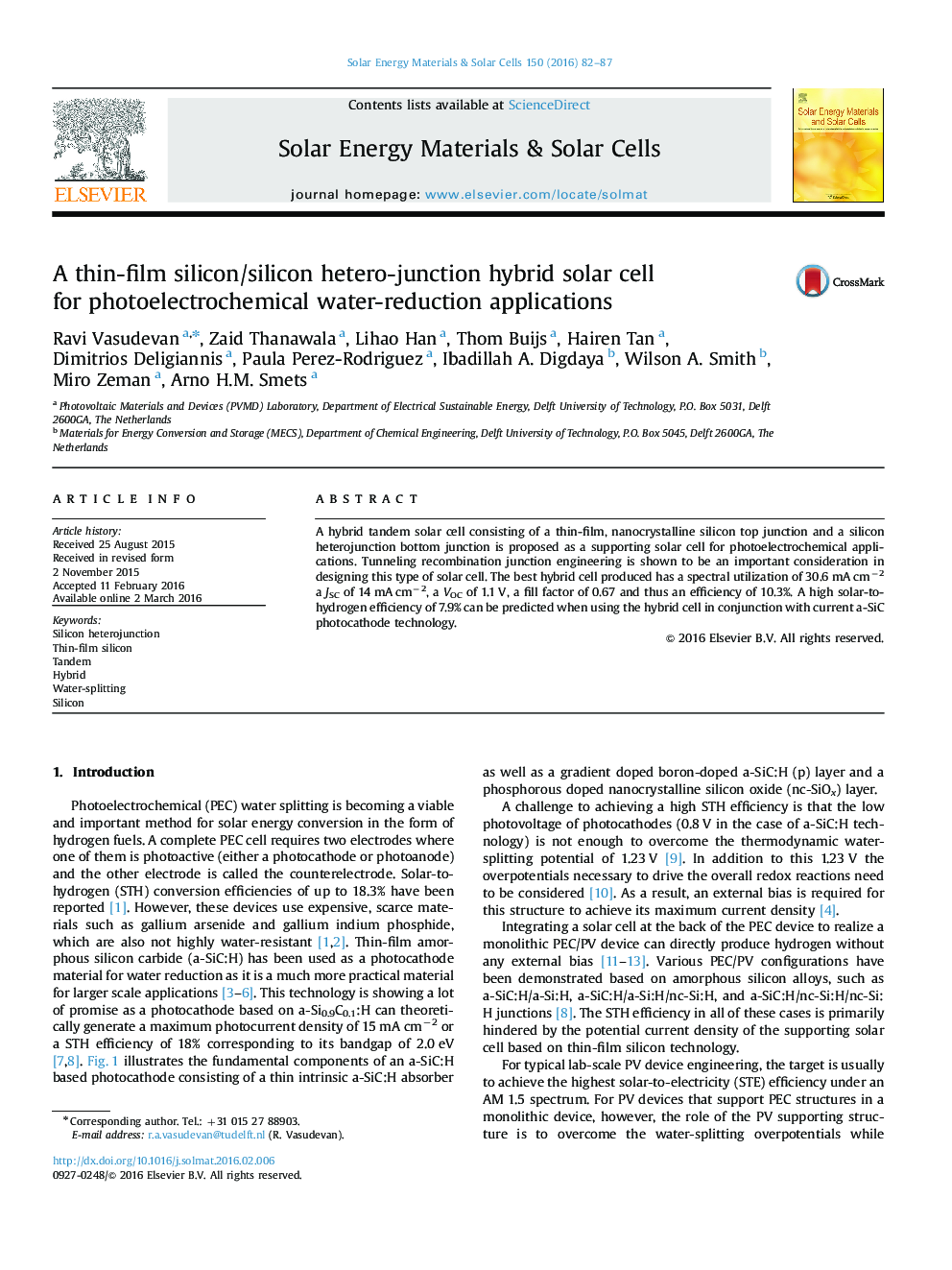| Article ID | Journal | Published Year | Pages | File Type |
|---|---|---|---|---|
| 77548 | Solar Energy Materials and Solar Cells | 2016 | 6 Pages |
•A hybrid solar cell using a thin-film top and wafer based bottom cell is proposed.•Tunneling junction engineering is identified as a key issue for this technology.•Fabricated cell has an efficiency of 10.3% under AM 1.5•Solar to hydrogen efficiency of 7.9% is predicted with a-SiC:H photoelectrode.
A hybrid tandem solar cell consisting of a thin-film, nanocrystalline silicon top junction and a silicon heterojunction bottom junction is proposed as a supporting solar cell for photoelectrochemical applications. Tunneling recombination junction engineering is shown to be an important consideration in designing this type of solar cell. The best hybrid cell produced has a spectral utilization of 30.6 mA cm−2 a JSC of 14 mA cm−2, a VOC of 1.1 V, a fill factor of 0.67 and thus an efficiency of 10.3%. A high solar-to-hydrogen efficiency of 7.9% can be predicted when using the hybrid cell in conjunction with current a-SiC photocathode technology.
